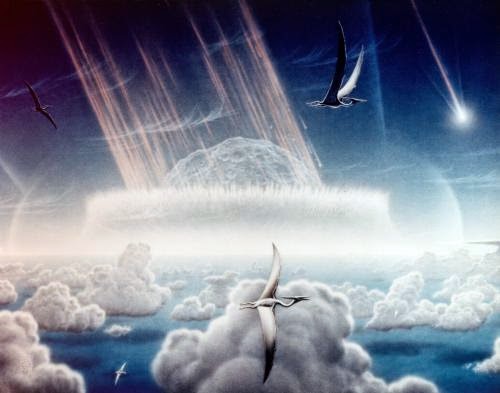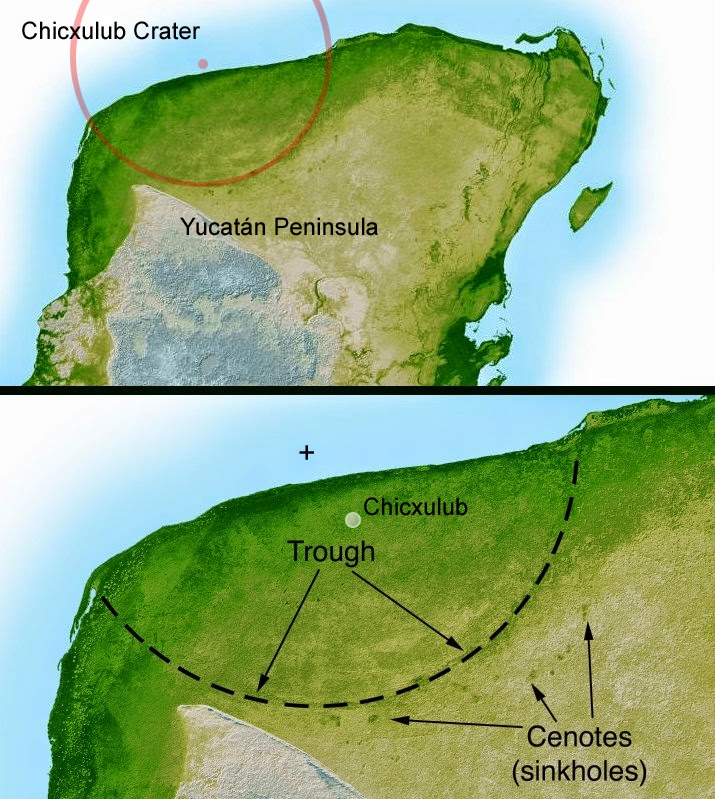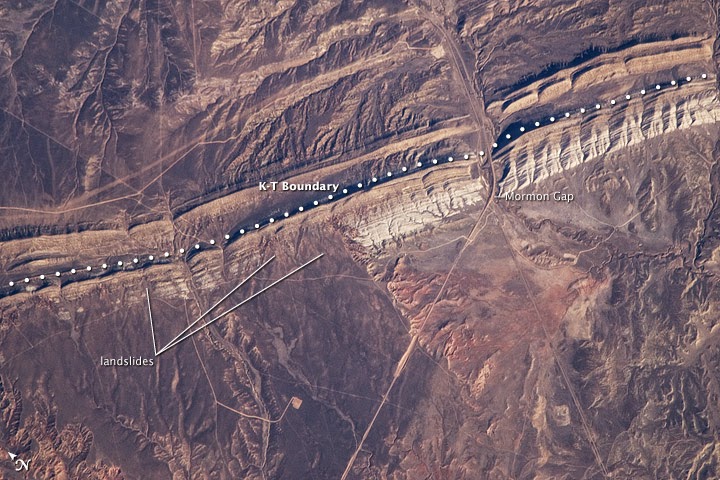
What suddenly made the dinosaurs disappear 65 million or 66 million years ago? Whatever it was, all indications show that it was a massive extinction event. The fossil record not only shows dinosaurs disappearing, but also numerous other species of the era. Whatever it was, there was a sudden change in the environment that changed evolution forever.
The leading theory for this change is a small body (likely an asteroid or a comet) that slammed into Mexico’s Yucatan Peninsula. The impact’s force generated enough debris to block the Sun worldwide, killing any survivors of starvation.
The crater
There have been numerous theories proposed for the dinosaurs’ death, but in 1980 more evidence arose for a huge impact on the Earth. This happened when a father-son University of California, Berkeley research team—Luis Alvarez and Walter Alvarez—discovered a link with a 110-mile (177-kilometer) wide impact crater near the Yucatan coast of Mexico. It’s now known as Chicxulub.

It sounds surprising that such a huge crater wasn’t found until that late, especially given satellites had been doing Earth observation for the better part of 20 years at that point. But as NASA explains, “Chicxulub … eluded detection for decades because it was hidden (and at the same time preserved) beneath a kilometer of younger rocks and sediments.”
The data came from a Mexican company that was seeking oil in the region. The geologists saw the structure and guessed, from its circular shape, that it was an impact crater. Further observations were done using magnetic and gravity data, NASA said, as well as space observations (including at least one shuttle mission).
The layer
The asteroid’s impact on Earth was quite catastrophic. Estimated at six miles (9.7 kilometers) wide, it carved out a substantial amount of debris that spread quickly around the Earth, aided by winds in the atmosphere.
If you look in the fossil record all over the world, you will see a layer that is known as the “K-T Boundary”, referring to the boundary between the Cretaceous and Tertiary periods in geologic history. This layer, says the University of California, Berkeley, is made up of “glassy spheres or tektites, shocked quartz and a layer of iridium-enriched dust.”

Of note, iridium is a rare element on the surface of the Earth, but it’s fairly common in meteorites. (Some argue that the iridium could have come from volcanic eruptions churning it up from inside the Earth; for more information, see this Universe Today story.)
Was it simply ‘the last straw’?
While an asteroid (or comet) striking the Earth could certainly cause all the catastrophic events listed above, some scientists believe the dinosaurs were already on their last legs (so to speak) before the impact took place. Berkeley points to “dramatic climate variation” in the million years preceding the event, such as very cold periods in the tropical environment that the dinosaurs were used to.
What might have caused this were several volcanic eruptions in India around the same time. Some scientists believe it was the volcanic eruptions themselves that caused the extinction and that the impact was not principally to blame, since the eruptions could also have produced the iridium layer. But Berkeley’s Paul Renne said the eruptions were more a catalyst for weakening the dinosaurs.
“These precursory phenomena made the global ecosystem much more sensitive to even relatively small triggers, so that what otherwise might have been a fairly minor effect shifted the ecosystem into a new state,” Renne stated in 2013. “The impact was the coup de grace.”
Note : The above story is based on materials provided by Universe Today. The original article was written by Elizabeth Howell.










